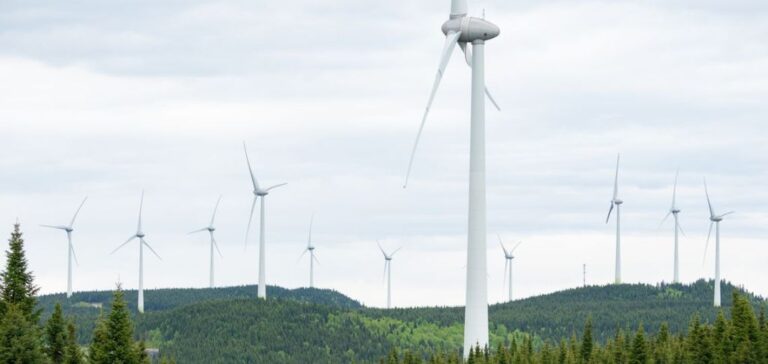Boralex, a leader in renewable energies, has finalized a $95 million financing package for its Témiscouata II wind farm in southeastern Québec.
This financing, arranged by Desjardins, consolidates Boralex’s position in the renewable energy market, while optimizing its financial structure.
The transaction includes an $85 million term loan, repayable over 11 years, and a $9.7 million letter of credit facility.
These funds are intended to cover contractual commitments related to the project, in particular with Hydro-Québec.
This financing enables Boralex to continue operating the wind farm while optimizing financing costs, without increasing its capital structure.
Integrating ESG criteria into financing packages
The financing of the Témiscouata II park is distinguished by the integration of an interest rate swap contract, combined with ESG criteria.
This innovative mechanism, developed in collaboration with Desjardins, enables Boralex to hedge the risks associated with interest rate fluctuations while aligning financing with measurable environmental and social performance.
This type of contract, increasingly popular in the financial sector, reflects the evolution of financing practices in renewable energies.
Boralex is thus reinforcing its strategy of integrating ESG criteria, without compromising its profitability or its ability to raise funds on advantageous terms.
Impact on Boralex’s global strategy
This financing is part of a broader strategy to strengthen Boralex’s existing assets while pursuing its expansion.
By securing stable and optimized financial conditions for Témiscouata II, Boralex can focus on developing new projects, both in Canada and internationally.
Boralex’s ability to structure complex financings while integrating ESG criteria demonstrates its maturity as a major player in the industry.
It also meets the growing expectations of investors for investments that combine profitability and responsibility.
This financial package underlines the importance of flexibility in the management of energy infrastructure projects.
By adapting its financial tools, Boralex is able to maintain a high level of competitiveness while anticipating the future needs of its operations.






















